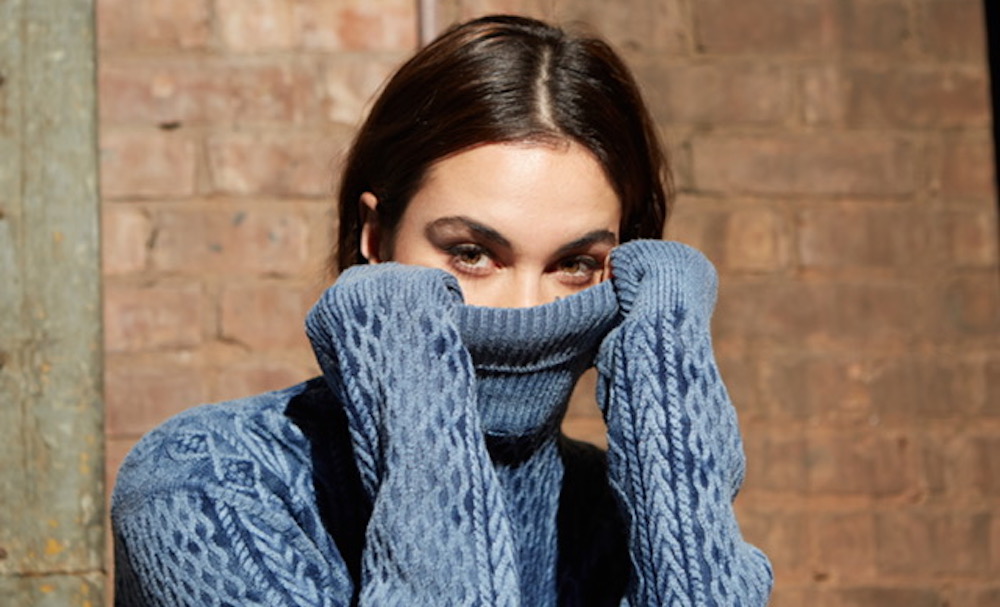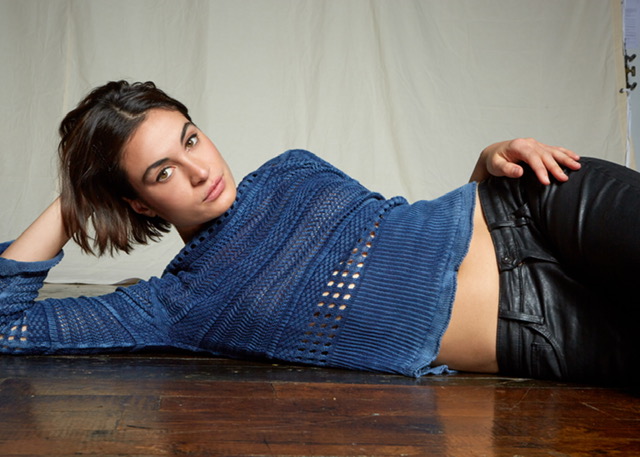
Inside Out Indigo Dyeing Opens Up Design Opportunities
With Lenzing’s latest launch, indigo is breaking free of its traditional five-pocket jean limits.
TENCEL™ Modal with Indigo technology offers an alternative to traditional indigo dyeing, which soaks yarn in vats. This process uses considerable energy, water and chemicals to get the fibers to take the color. In comparison, the newly introduced TENCEL™ development dyes modal when it is in its liquid form, infusing the fibers with pigment before they are extruded. This “inside out” application of dye comes with water, chemical and energy use savings.
In a webinar on Feb. 25, Lenzing’s Tricia Carey spoke with Adriano Goldschmied of House of Gold and Guenther Widler from DyStar about the ecological, creative and quality difference of TENCEL™ Modal with Indigo Color technology.
One of the biggest environmental savings of the new fibers is energy usage. Ninety-nine percent less electricity and 100 percent less heat energy is used to make TENCEL™ Modal with Indigo Color technology. “Every day when we open the paper or we read the news, we read about the influence of climate change,” said Adriano. “So it’s not something that we can think about later. We have to think about it today, because today we make our future.”
Water is also a critical piece of the puzzle. By dyeing indigo before it is spun into fibers, Lenzing can achieve a 99 percent water savings.

Lenzing tapped DyStar® to make a custom indigo dye for its new fibers. One of the main benefits of this creation is a very low amount of the chemical aniline in finished garments. Aniline is a raw material used to make synthetic indigo, and it has been suspected to cause cancer. The pre-reduced indigo DyStar® created for Lenzing lowers the level of aniline to the smallest possible amount, allowing the fibers to receive Standard 100 certification from Oeko-Tex.
Guenther noted that traditional denim dyeing creates a lot of waste in the industry. After wastewater is treated, it generates salt that can’t be burned or destroyed. Throughout the industry, thousands of tons of salt end up in landfills each year.
There is also cotton waste that comes with conventional dyeing. “In these huge denim dyeing ranges, what they are using or what is used presently, a lot of beginning of dyeing or end of dyeing are produced and a lot of them is waste,” said Guenther. “For sure, you can recycle them and you can reuse that, and so on, but then we are coming to the point of money. This is costing money and this is destroying the margin of the dyers.”
Besides the environmental benefits of infusing color into modal, there are also design perks.
Indigo in traditional dyeing sits on top of the fiber, leading to crocking, or color transfer. TENCEL™ Modal with Indigo Color technology doesn’t bleed color onto other surfaces, and it also retains its original hue. Guenther explained that since the indigo is embedded, there is also no yellowing effect.
As one of the first designers to create textiles and garments using TENCEL™ Modal with Indigo technology, Adriano has also seen the benefits firsthand. He says he doesn’t like to work alone, and his collection—titled Seed of Joy—reflects this preference for partnership. Fabrics were created by mills Blue Diamond and In The Loop. Meanwhile, with indigo venturing into new territory with sweater knits, Adriano tapped 3D knitting company Shima Seiki to create waste-free garments. To make the designs recyclable, the designer used TENCEL™ thread from Crafil and non-metal trims.

One of the aspects that makes indigo different from other dyes is its ability to react to laundering techniques and treatments such as bleach. For Seed of Joy, Adriano worked with laundry Tonello to test out different washes and effects.
Since the fibers are new, there is still an experimentation happening in terms of different fiber blends. “We’re open for innovation, what can be done,” said Tricia. “And I think there’s so many great minds and new ideas out in the market, this is a chance to experiment with something new.”
The newly released TENCEL™ Modal with Indigo Color technology fibers offer virtually endless possibilities. Panelists see the opportunity to expand it to categories such as outerwear, active attire and footwear. The fibers can also be incorporated into bedding due to the improved crocking. Without the worry about harmful chemicals, the new TENCEL™ fibers open up applications for indigo in baby items, such as clothing and sheets.
“I have a feeling that we’ve been exploring only a small part of what can be done with this fiber,” Adriano said.
Watch the full webinar here.






